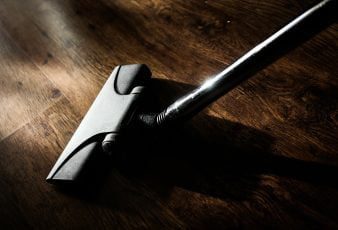Decided it’s time for a change? We don’t blame you! As the UK is enduring its third national lockdown, we’ve all been spending an awful lot of time at home – and it’s only right that you want your abode to be as comfortable and stylish as possible.
If you’ve picked your dream laminate flooring, had it delivered to your door, and now it needs fitting, be sure to read on for tips on installing it yourself. But before you learn how to lay laminate flooring, you need to make sure that you have the necessary tools at hand – all of which are available to purchase from most DIY stores.
These include:
- a hand saw
- a pencil
- a tape measure
- laminate flooring underlay
There are a number of other tools that you may wish to use to make life easier or to add a professional finish. Things like a spirit level, Stanley knife, knee pads, spacers, pull bars, masking tape, and an electric saw. Oh, and not forgetting a vacuum cleaner to clear any dust or debris!
Top tricks for laying laminate flooring
#1 Always measure up
For rooms that are perfectly square or rectangular – it’s easy – the area can be calculated by multiplying the width by the height. However, rooms with recesses or chimney breasts, alcoves, and fireplaces can be tricky.
Consider drawing a diagram and making a note of the measurements for each individual area. Remember to measure the lengths more than once to ensure they’re accurate – and don’t forget to measure to the back of door frames or trims if you want the flooring to go under them when it’s fitted.
#2 Preparation is key
If you’re laying laminate flooring in a small-medium-sized room, it’s worth finding somewhere temporary to keep furniture, as opposed to shuffling everything around in a larger room that has space in abundance.
Make sure that the entire area is smooth, even, and dry, and fix any screws and nails so they don’t puncture the laminate underlay or new flooring. Use a vacuum to clean up dust and debris and scrape off any existing adhesives from the previous flooring.
You may also choose to remove the skirting boards so that they can be refitted once the laminate boards are in (if you’re planning not to use laminate beading).
#3 Lay the side of the row by side
A top trick for laying laminate flooring is to leave all your packs of boards to rest horizontally in the area that they are to be fitted, for at least 48-hours, so they can acclimatize to the room. When laying the boards, place them side by side, ensuring that the joints are staggered from row to row. Use spacers to maintain a consistent gap between the planks and the wall.
#4 Don’t skimp on safety
When fitting new flooring yourself, your safety is imperative. The chances are that you will need to adjust the length of the last board in the row to ensure it fits perfectly, and a pair of safety goggles and a face mask would not go amiss when cutting the wooden boards.
There’s no denying that flooring is hard on the knees, so you want to protect them during the installation process too. Whilst knee pads are ideal, the wrong pair will scratch your brand-new laminate floors. Try pads that have a cloth, foam or soft rubber material or, better still, gel-filled pads which will help distribute the weight.
#5 Ask someone to help
Many hands make light work. Measuring a room and fitting new flooring singlehandedly can be a challenge – even if you’re a dab hand at DIY! Asking a family member (or someone in your bubble!) to assist is a sure-fire way to ensure your measurements are 100% accurate and can speed the whole thing up. Win-win.
#6 Use a top-quality laminate underlay
Underlay is an integral ingredient that shapes how your new flooring looks, feels, and wears. It will be laid over the top of your subfloor before you trim it down to size – cutting a 16mm gap around any pipes. The lengths of underlay will then need to be placed parallel and joined using masking tape.
Sounds easy enough, doesn’t it? However, the right laminate flooring underlay will add underfoot comfort, reduce noise and act as a shock absorber and insulator. For instance, a thicker underlay offers more soundproofing which is ideal for rooms upstairs. Not all laminate underlays are suitable for wet environments (e.g. the bathroom or kitchen) but some types have a built-in damp-proof membrane.
If you’re unsure what kind of laminate underlay you need, or you’re looking to buy laminate flooring underlay, be sure to visit Carpet Underlay Shop – the UK’s leading underlay supplier. They have an extensive range of products on offer – at the most competitive prices – and will be more than happy to share their expertise.
Read Also:
- Different Types of Flooring that You Should Consider When Decorating Your Home
- Soft Surfaces – The Best Installers of Play Area Flooring in the UK
- Tips on Combining Wood Furniture and Wood Flooring
- Notable Characteristics of Timber Flooring That You Must Know Before Investing
- How To Look After Your Oak Flooring































